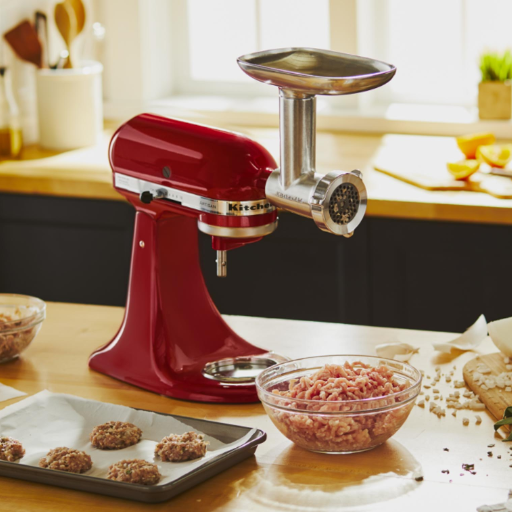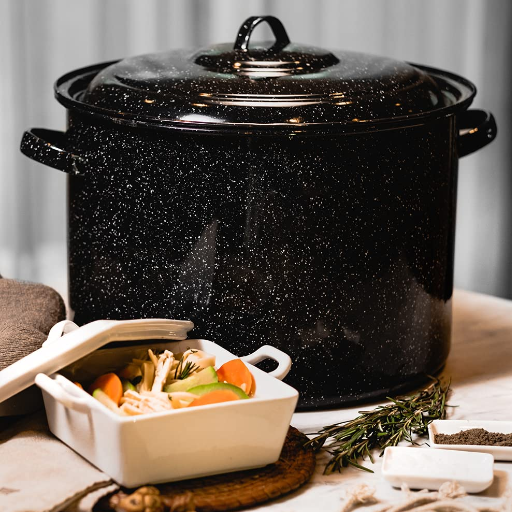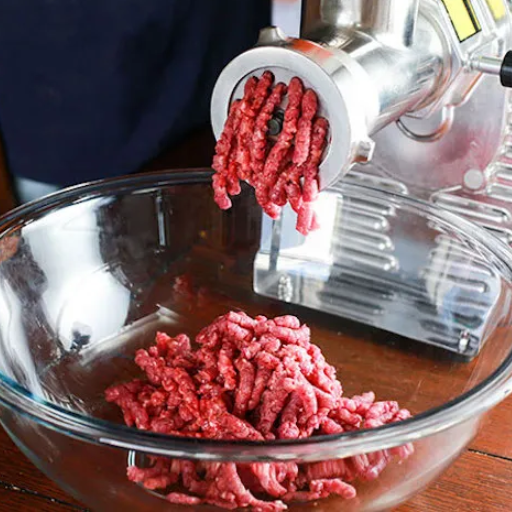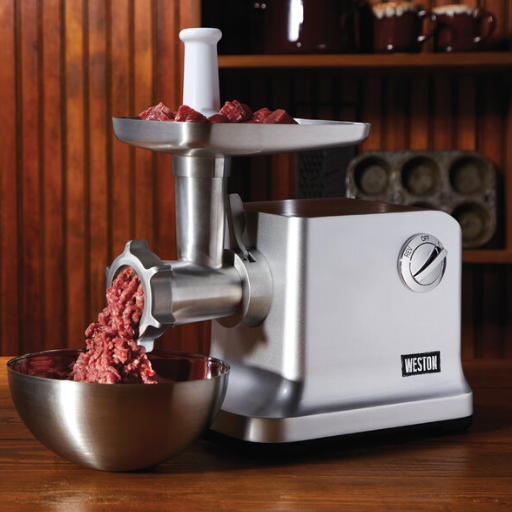Choosing the right dinnerware is a crucial decision for businesses in the food and hospitality industry, as well as event planners and retailers looking to meet diverse customer needs. This guide is designed to provide a comprehensive overview of wholesale dinnerware options, helping you understand the various materials, styles, and practical applications. From elegant, durable porcelain plates perfect for upscale dining experiences to convenient, eco-friendly disposable options ideal for casual gatherings, we’ll cover everything you need to make an informed decision. Along the way, we’ll explore the pros and cons of each type, considerations for bulk purchasing, and trends in the dinnerware market to ensure your selections align with both functionality and aesthetics. Whether you’re aiming to elevate your dining setup or searching for cost-efficient solutions, this guide has you covered!
What are the best wholesale dinnerware options for restaurants?

When selecting wholesale dinnerware for restaurants, the key is to balance durability, aesthetic appeal, and cost-efficiency. Porcelain and ceramic dinnerware are popular choices due to their timeless elegance and ability to withstand frequent use, making them ideal for upscale or casual dining. For more high-traffic or cost-conscious establishments, melamine is a durable and lightweight option that resists breakage. Additionally, glass dinnerware offers a versatile solution, blending sophistication and easy maintenance. When buying in bulk, consider suppliers that offer customizable designs to reflect your restaurant’s branding while ensuring high-quality materials that meet safety standards.
Porcelain vs. china dinnerware: Which is more durable?
When comparing porcelain and china dinnerware in terms of durability, the distinction lies primarily in their composition and manufacturing processes, though both materials are crafted from fine clay. Porcelain tends to be more durable due to its denser structure and higher firing temperature, making it resistant to chips and cracks. China, while also strong, is slightly less robust because it often incorporates bone ash, providing a more delicate, lightweight feel. However, both types offer excellent durability for everyday and formal use when properly cared for. Ultimately, porcelain may be the better choice for high-traffic settings like restaurants, while china is perfect for adding a touch of elegance in less demanding environments.
Comparing prices of wholesale ceramic and melamine plates
When comparing the prices of wholesale ceramic and melamine plates, several key factors come into play, including durability, design, and intended use. Ceramic plates, while typically more expensive, offer an elegant appearance and withstand higher temperatures, making them ideal for formal dining and households. The average price range for ceramic plates starts around $2 to $5 per plate in bulk, with high-end options reaching $10 or more, depending on the quality and design.
Melamine plates, on the other hand, are known for their affordability and practicality. Wholesale prices for melamine often range from $1 to $3 per plate, making them a budget-friendly choice for casual settings, outdoor use, or high-volume establishments. While melamine is less expensive, it is not microwave-safe and has a slightly less refined appearance than ceramic.
Ultimately, the choice between ceramic and melamine plates depends on the buyer’s priorities. For cost-conscious buyers seeking versatility and lightweight durability, melamine plates are an excellent option. For those who want a more premium and timeless aesthetic, ceramic plates are worth the additional investment.
How to choose the right wholesale tableware for your business?

When selecting wholesale tableware for your business, first examine your restaurant’s concept and demographics. The materials such as porcelain, glass, melamine, or stoneware must fit within your level of durability and style required. Consider the practicality of the pieces in terms of cleaning and space. Also, the design should seamlessly integrate with the overall décor without interfering with the function of the menu items served. Finally, check pricing and order amounts against your budget, and find suppliers who have dependable customer service and some level of adaptability to shifting needs.
Factors to consider when selecting dinnerware sets
When choosing dinnerware sets, it is essential to strike a balance between practicality, aesthetics, and durability. Start by considering the material—porcelain and bone china are elegant and durable, ideal for formal settings, while stoneware and melamine are more casual and resilient for daily use. Evaluate the style of the dinnerware in relation to your space’s ambiance, opting for neutral tones or patterns if versatility is a priority. Functionality is key; ensure the pieces are dishwasher and microwave safe if convenience matters to you, and check for stackable designs for efficient storage. Additionally, determine the number of place settings you need based on your household size and regular hosting habits. Finally, compare prices and reviews from trusted retailers, and consider investing in brands with strong warranties to protect your purchase.
Balancing elegance and durability in wholesale plates
Finding the perfect balance between elegance and durability in wholesale plates requires addressing a few important questions. For materials, porcelain and bone china are top options for their sophisticated appearance and durability, while stoneware offers a more rustic yet sturdy choice. Make sure the plates are dishwasher and microwave safe if practicality is a priority. Stackable designs can also save significant storage space. For the ideal number of place settings, consider your daily household needs and frequency of entertaining guests—sets of 12 are common for larger gatherings. Lastly, compare top-rated brands like Corelle, Lenox, and Mikasa, which consistently provide fashionable yet long-lasting dinnerware, and look for warranties that protect against chipping or breakage for a reliable investment.
Customization options for branded restaurant dinnerware
When customizing dinnerware for your restaurant, the possibilities are vast and cater to your branding needs. You can choose from a variety of materials, including porcelain, stoneware, and melamine, each offering unique durability and aesthetic qualities. Many top brands provide options to imprint your restaurant’s logo, name, or custom designs directly onto plates, bowls, and mugs, allowing for a personalized touch that reinforces brand identity. Additionally, customization often includes selecting the color scheme, patterns, or even unique shapes of the dinnerware to match your restaurant’s theme or concept. Companies like Steelite, Libbey, and Front of the House offer comprehensive customization services with tools to visualize your designs before production, ensuring the final result meets your expectations. Whether you prefer traditional elegance or modern simplicity, branded dinnerware customization gives your establishment both a professional and distinctive edge.
What are the benefits of buying disposable dinnerware wholesale?

Buying disposable dinnerware wholesale offers several distinct advantages for businesses. Firstly, it significantly reduces costs, as bulk purchasing typically comes with discounted rates and lower per-unit prices. Additionally, it ensures a consistent supply, minimizing the risk of running out during peak times or large-scale events. Wholesale options often provide a wide variety of styles and materials, allowing businesses to choose products that suit their needs while maintaining quality and aesthetics. Lastly, it saves time and effort by streamlining procurement, making it easier to manage inventory with fewer frequent orders.
Cost-effective solutions for catering businesses
Catering businesses can adopt several strategies to remain cost-effective while maintaining quality and service standards. Purchasing ingredients and supplies in bulk, such as non-perishable items or commonly used materials like tableware, can significantly reduce expenses. Investing in energy-efficient equipment, such as modern ovens or refrigerators, can cut long-term operational costs. Reducing food waste by planning precise portions and offering creative ways to reuse ingredients, like turning leftovers into new dishes, is another effective approach.
Additionally, sourcing seasonal and locally grown produce not only lowers costs but also enhances menu quality with fresh ingredients. Streamlining menus to focus on a few popular, high-margin items can also help reduce preparation costs and improve efficiency. Incorporating technology, such as catering management software, simplifies booking, inventory tracking, and communication, saving both time and labor expenses. Through these strategies, catering businesses can strike a balance between affordability and quality, ensuring long-term profitability.
Eco-friendly disposable plate options for environmentally conscious establishments
For establishments aiming to reduce their environmental footprint, there are several excellent eco-friendly disposable plate options available. Plates made from compostable materials like sugarcane bagasse, bamboo, and palm leaves are highly sustainable. Sugarcane bagasse is a byproduct of sugar manufacturing, making it renewable, durable, and fully compostable. Similarly, bamboo plates stand out for their fast-growing nature and biodegradability, while palm leaf plates are crafted from naturally fallen leaves, requiring no extra harvesting or processing.
Another popular choice is plates made from recycled paper or cardboard. These plates can be composted in industrial facilities or recycled again, depending on their coating. Additionally, some companies offer biodegradable plates lined with materials like polylactic acid, derived from plants like corn, providing a plastic-free, eco-conscious alternative.
Bulk discounts on disposable dinnerware for large events
It is convenient and economical buying disposable dinnerware in bulk for large functions. Most suppliers have bulk pricing, where the cost per unit diminishes with larger orders. For better prices and sustainable products, check businesses that focus on catering supplies or green products. Some distributors have large order packages that are customizable, allowing you to choose the best deal while still ensuring the quality of the items you need. Additionally, enrolling with loyalty programs or subscription services often provides additi.
onale savings that increase cost-effectiveness. When comparing service providers, it is essential to check pricing, delivery timelines, and discount eligibility with leading providers. Make sure there are no complaints on environmental rights certifications involved for best results.
How to create a stylish dining experience with wholesale dinnerware?

Creating a stylish dining experience with wholesale dinnerware begins with selecting pieces that suit your theme and aesthetic. Opt for dinnerware in cohesive colors or designs to create a unified, elegant look. Mix and match textures, such as pairing matte plates with glossy bowls, to add visual interest. Incorporate accent pieces like chargers, serving platters, or statement glassware to elevate the table setting. Don’t forget to balance functionality with style—ensure the dinnerware is durable and complements your menu. Finishing touches, such as cloth napkins, centerpieces, and strategic lighting, will tie the entire experience together seamlessly.
Mixing and matching dinnerware sets for a unique table setting
Creating a cohesive yet distinctive table setting through mixed dinnerware begins with a clear vision. Start by choosing a unifying element—this could be a color palette, pattern, or material—to ensure the different pieces harmonize. For example, select a primary base color like white or neutral tones and layer in patterns or vibrant accents to create depth and intrigue. Consider combining complementary styles, such as modern geometric designs with traditional florals, to strike a balance between contrast and coordination.
Textures also play a vital role in elevating the aesthetic. Pair smooth, glossy finishes with rustic, textured pieces to create an appealing tactile experience. Similarly, use consistent shapes, like round or square, to maintain visual continuity even when mixing patterns or colors. Accessorize with complementary serving pieces and glassware, and use napkins or runners that tie into the overall theme. Ultimately, mixing and matching dinnerware allows you to curate a customized, memorable dining experience while showcasing your personal style.
Incorporating charger plates in bulk for an elegant touch
Using charger plates in bulk is an excellent way to enhance the sophistication of your table setting while maintaining practicality. Charger plates serve as a decorative base under dinnerware, adding depth and richness to the overall aesthetic. To incorporate them effectively, choose materials and finishes that complement your theme—options like metallic gold, silver, or glass work well for formal dinners, while wooden or rattan chargers suit rustic or casual gatherings.
When sourcing in bulk, focus on quality and durability to ensure longevity, particularly if they will see frequent use for events or entertaining. Opt for suppliers that offer diverse designs to match different occasions. Pair chargers with complementary dinnerware to create visual harmony, and consider layering them with napkins or menu cards to elevate the presentation. By incorporating charger plates thoughtfully, you can strike the perfect balance between elegance and functionality.
Enhancing decor with complementary wholesale serveware
To effectively enhance decor with wholesale serveware, focus on pieces that combine style, durability, and versatility. Look for serveware crafted from quality materials like porcelain, stainless steel, or tempered glass to ensure they withstand frequent use while maintaining an elegant appearance. Prioritize items with timeless designs that blend seamlessly with various themes or occasions—this allows for easy integration into different table settings.
For a coordinated look, pair serving dishes, platters, and bowls with your existing tableware and centerpiece arrangements. Opt for neutral tones or metallic finishes to keep the aesthetic refined and adaptable. Incorporating modern touches, such as geometric patterns or textured finishes, can further elevate the visual interest of the setup.
Additionally, choose wholesale suppliers that offer sets or mix-and-match options, allowing you to tailor serveware collections to your needs while remaining budget-conscious. From buffet-style presentations to formal dinners, selecting serveware that balances practicality with design can leave a lasting impression on guests and elevate the overall ambiance.
What are the latest trends in wholesale dinnerware for 2025?

The dinnerware trends for 2025 emphasize sustainability, individuality, and artistic expression. Eco-friendly materials such as bamboo, recycled glass, and biodegradable ceramics are becoming increasingly popular as businesses and consumers prioritize environmental responsibility. Handcrafted and artisanal designs, featuring organic shapes and unique textures, are in high demand, offering a bespoke feel to table settings. Additionally, bold color palettes and mixed material combinations—like ceramic paired with wood or metal accents—are trending, creating striking contrasts and modern aesthetics. Wholesale buyers are also looking for versatile pieces that blend functionality with creative flair, catering to both casual and formal dining experiences.
Popular colors and patterns in porcelain and china dinnerware
Current trends in porcelain and china dinnerware focus on earthy, natural tones such as soft beiges, muted greens, and warm terracottas, which evoke a sense of calm and connection to nature. Neutral palettes like whites and grays remain timeless choices, offering a minimalist and elegant aesthetic. On the other hand, jewel tones such as emerald green, sapphire blue, and deep maroon are emerging as a sophisticated option for those seeking a bold, striking statement.
When it comes to patterns, organic and hand-painted designs are highly sought after, reflecting an artisanal and personalized touch. Floral motifs, inspired by nature, remain a classic favorite, with modern interpretations often incorporating abstract or watercolor styles. Geometric patterns and textured finishes are also popular, adding dimension and a contemporary flair to dinnerware collections. Additionally, metallic accents like gold or platinum rims add a touch of luxury, perfect for formal dining settings.
Innovative materials gaining traction in the wholesale tableware market
The wholesale tableware market is witnessing a surge in demand for innovative materials that combine durability, sustainability, and aesthetics. One prominent trend is the rise of eco-friendly materials, such as bamboo, recycled glass, and biodegradable composites, which cater to the growing focus on environmental responsibility. These materials not only reduce waste but also align with consumer values for sustainable living.
Another material gaining popularity is melamine, prized for its lightweight durability and versatility. Melamine tableware offers a practical yet stylish solution, with designs that mimic ceramic or porcelain while being shatter-resistant—ideal for both casual dining and outdoor events.
High-tech ceramics and stoneware with advanced glazing techniques are also becoming sought-after. These materials are celebrated for their robustness, heat resistance, and ability to retain a sleek, modern aesthetic. Many manufacturers are enhancing their products with scratch-resistant and non-stick coatings, appealing to both professional and home chefs alike.
These innovative materials demonstrate the market’s ability to adapt to contemporary demands, blending functionality with forward-thinking design and sustainability.
Sustainable and eco-friendly dinnerware options on the rise
The demand for sustainable dinnerware is driven by growing consumer awareness of environmental issues and the push for eco-conscious lifestyles. Brands are increasingly offering biodegradable and compostable dinnerware made from materials such as bamboo, wheat straw, palm leaves, and sugarcane bagasse. These options decompose naturally, leaving no harmful residue, making them ideal for single-use or outdoor events. Additionally, recycled materials, like glass or metal, are being used to create durable, reusable dinnerware that minimizes waste.
Ceramic and stoneware options are now frequently crafted with non-toxic, lead-free glazes and produced through greener manufacturing processes that involve less energy and water consumption. Furthermore, many companies are focusing on packaging alternatives that reduce plastic usage and emphasize recyclability. By combining high performance with sustainable materials, the dinnerware market is rapidly aligning itself with global sustainability goals.
How to care for and maintain wholesale dinnerware to ensure longevity?

Following proper steps when caring for and maintaining the dinnerware is important for its durability and long-term use. To begin with, always follow the manufacturer’s care instructions. Each piece is different, e.g., ceramics, stoneware, and glass require gentle handling. Delicate pieces should be hand washed, while more durable dinnerware can be safely placed in the dishwasher, only if labeled as dishwasher-safe. Exposure to drastic changes in temperature should be avoided, as it can lead to cracks or breaks. For reusable dinnerware, check for chipped and scratched pieces as these might be unsightly and unsafe. Replace the dinnerware to maintain safety aesthetics. Finally, secure the dinnerware for storage to avoid accidental damage. Stack with care or use padding for additional protection.
Best practices for cleaning and storing porcelain dinnerware
Caring for porcelain dinnerware requires a gentle and thoughtful approach. When cleaning, use warm water and a mild dish soap, avoiding abrasive scrubbers or harsh detergents that can damage the glaze. Handwashing is often the safest method, but many porcelain items labeled dishwasher-safe can be washed using the delicate cycle. Ensure the dinnerware is dried completely after washing to prevent water spots or discoloration. For storage, stack pieces carefully with soft padding, such as felt or rubber separators, between each item to avoid scratches. Avoid overloading storage spaces, and keep porcelain away from areas with high risk of impact or sudden temperature shifts.
Tips for preventing chips and cracks in wholesale plates and bowls
Preventing chips and cracks in wholesale plates and bowls starts with careful handling and proper storage. Always lift plates and bowls individually rather than dragging them, as sliding can cause surface damage. When storing, use padding such as felt liners or paper between stacked items to prevent friction and pressure that can lead to cracks. Avoid overloading dish racks or storage areas to reduce the risk of impact. During washing, use a gentle cycle in the dishwasher or wash by hand with non-abrasive sponges and mild detergent. Additionally, pay attention to temperature changes—never expose plates and bowls to sudden shifts, such as moving directly from a freezer to a hot oven, as this can cause thermal shock and fractures.
When to replace your restaurant’s dinnerware inventory
Replacing your restaurant’s dinnerware inventory is crucial to maintaining a professional and appealing dining experience. Signs that it’s time to refresh your inventory include visible wear such as chips, cracks, or discoloration, which can compromise hygiene and aesthetic appeal. Additionally, pay attention to fading designs or scratches that detract from the overall presentation of dishes. Breakage rates should also be monitored; if replacements for broken plates and bowls are becoming frequent, it could be a sign that your inventory is aging or of inadequate quality.
Consider replacing dinnerware during rebranding efforts or menu changes to ensure the design complements your updated aesthetic or new dishes. Investing in durable, high-quality dinnerware can minimize replacement needs over time. Regularly assess your inventory’s condition to ensure it reflects your commitment to quality and helps deliver a positive dining experience to your customers.
References
Frequently Asked Questions (FAQ)
Q: What is wholesale dinnerware, and how does it differ from retail dinnerware?
A: Wholesale dinnerware refers to the bulk purchase of tableware items, often at discounted prices, directly from manufacturers or wholesale dinnerware suppliers. This approach is ideal for businesses like restaurants or event planners looking to buy in large quantities, unlike retail, which caters to individual consumers.
Q: What are the most common materials used in wholesale dinnerware?
A: The most common materials used in wholesale dinnerware include porcelain, bone china, and melamine. Each has its unique properties; porcelain and bone china are known for their elegance and durability, while melamine is an affordable and shatterproof option.
Q: How do I choose the right dinner plates for my restaurant?
A: When selecting dinner plates for your restaurant, consider the style, durability, and material. Porcelain and bone china plates are ideal for an elegant dining experience, while melamine plates are practical for casual settings. It’s also essential to browse different designs that match your restaurant’s theme.
Q: What are wood charger plates, and why should I consider them?
A: Wood charger plates are decorative base plates placed under dinner plates to enhance the table setting’s aesthetics. They add a rustic and beautiful touch, making them an elegant option for weddings and special events.
Q: How can I ensure I’m buying from reputable wholesale dinnerware suppliers?
A: To ensure you’re purchasing from reputable wholesale dinnerware suppliers, research their reviews, request samples, and inquire about their shipping policies. It’s also helpful to check if they offer a wide range of top products and have a good track record in the industry.
Q: What are the benefits of using melamine tableware in a high-traffic restaurant?
A: Melamine tableware is highly durable, lightweight, and resistant to breakage, making it a practical choice for high-traffic restaurants. It comes in various designs and colors, allowing you to maintain a stylish presentation while ensuring long-lasting use.
Q: Are there eco-friendly options available in wholesale dinnerware?
A: Yes, eco-friendly options such as bamboo and biodegradable disposable plates are available in wholesale dinnerware. These options are ideal for businesses looking to reduce their environmental impact while still providing beautiful tableware solutions.
Q: How can I maintain the quality of my dinnerware over time?
A: To maintain the quality of your dinnerware, follow proper care instructions such as hand washing delicate items, using appropriate detergents, and avoiding abrasive materials. Regularly inspect your dinnerware for chips or cracks to ensure the longevity of your investment.
Q: What should I consider when purchasing flatware to match my dinnerware?
A: When purchasing flatware to match your dinnerware, consider style, material, and finish. The flatware should complement the overall aesthetic of your dinnerware set, providing a cohesive and elegant table setting for your guests.






